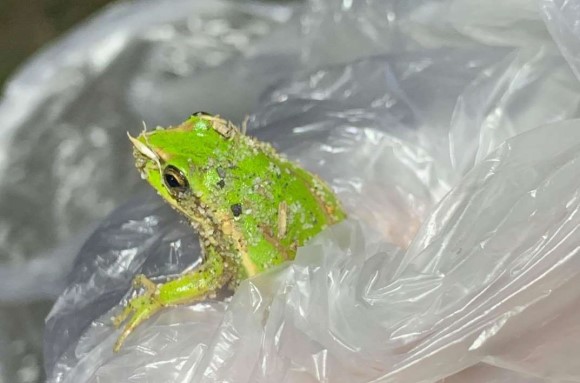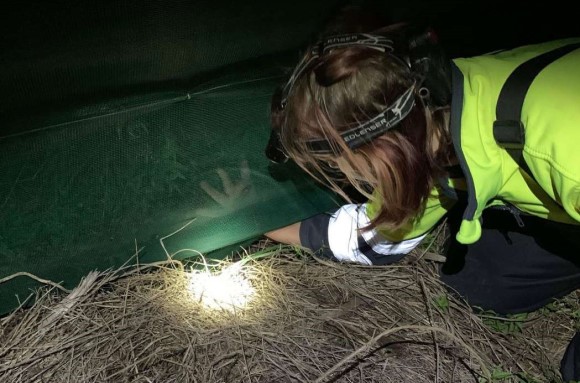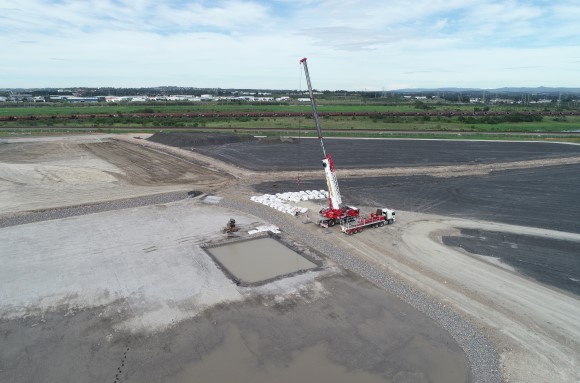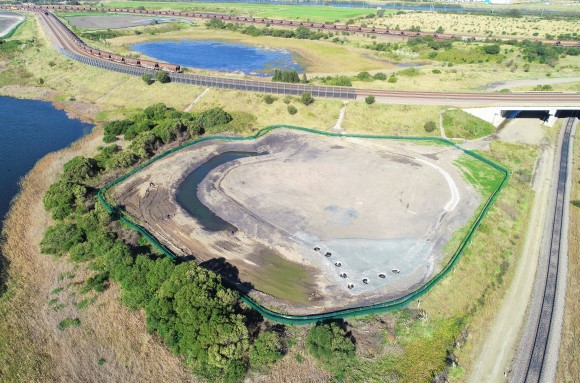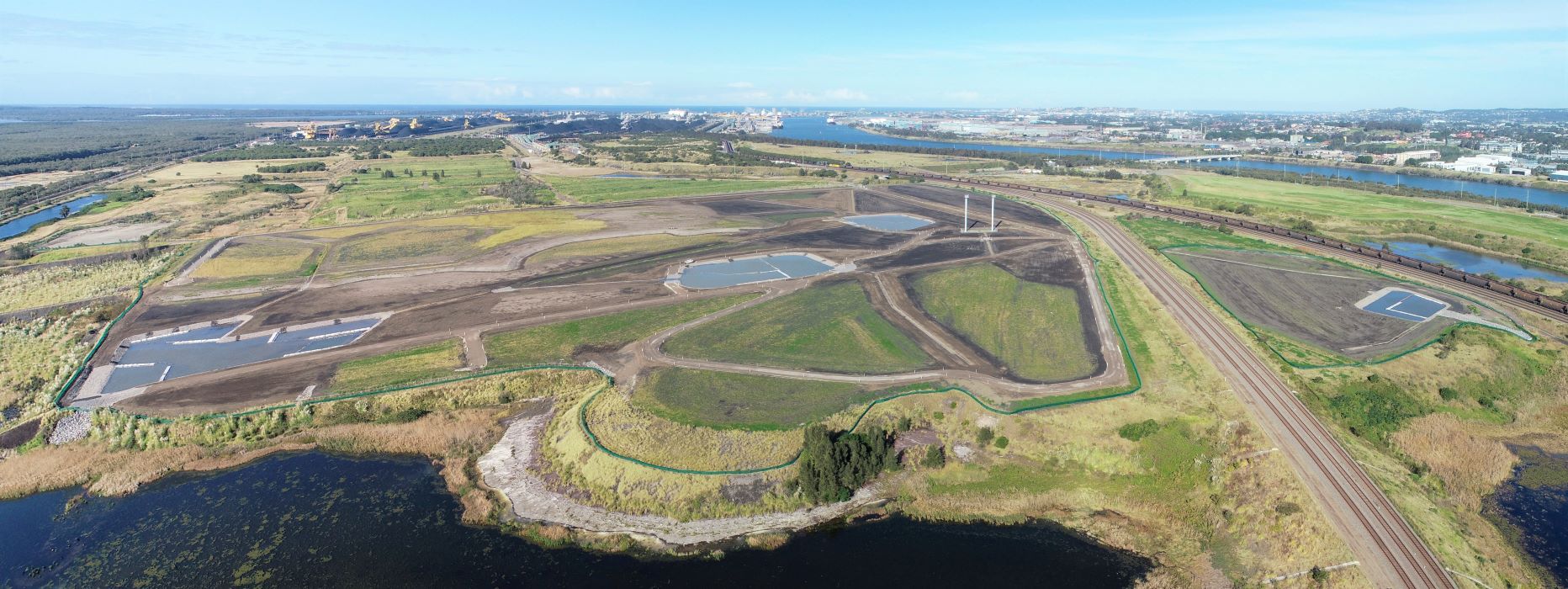
Kooragang Island waste emplacement facility rehabilitation
Kooragang Island Waste Emplacement Facility is a former industrial waste disposal area located in Newcastle. The site was used as a steelworks landfill for more than 30 years until its closure in 1999. The Hunter and Central Coast Development Corporation appointed NSW Public Works to manage the contract for Stage 5 of the site’s rehabilitation.
The site is within a sensitive and complex environmental area, being home to a population of endangered Green and Golden Bell Frogs, several migratory bird species, and the nearby RAMSAR-listed Hunter Estuary Wetlands. Utilising expertise in environmental management and prior knowledge of the site, NSW Public Works worked closely with key stakeholders to manage an approach that minimised changes to site processes by maintaining similar site hydrology, vegetation and surface soils while isolating potential contaminants. NSW Public Works' on-site presence provided assurance that regulatory requirements were met and risks were identified and managed in consultation with the client.
The site has strict environmental controls including a purpose designed boundary frog exclusion fence which is swept daily for the presence of Green and Golden Bell Frogs. In early 2020, there had not been a frog sighting for many months due to the extended drought period. However, sudden rainfall triggered a breeding event. Juvenile frogs disperse rapidly to avoid being cannibalised by larger frogs, and as they are smaller and more mobile, they were able to climb directly over the exclusion fence, infiltrating the work site.
The works were temporarily put on hold, and displaying adaptability and multi-skilling NSW Public Works Project Manager, Gary Woodham, was assigned to a temporary refuge creation team. The team dug small holes in the ground, lining them with a plastic bag, adding a few rocks and vegetation and filling them with aged water. This action provided hydration points and hiding areas for the frogs. From here they were safely captured and relocated by a University of Newcastle team who spent nights undertaking surveys, catching and relocating, until all frogs were removed from the work zones.
Over 300 juveniles were relocated from the site on one weekend, giving them a chance to survive and allowing works to quickly recommence.
